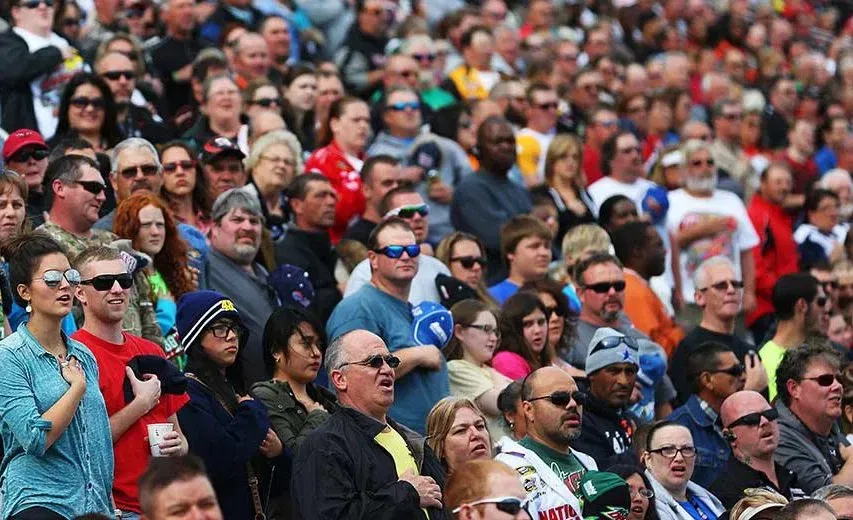
Imago
Via NASCAR

Imago
Via NASCAR
As anticipation builds for the upcoming NASCAR Cup Series race at Richmond Raceway on August 16, the conversation goes beyond the electric atmosphere expected under the lights. Richmond, known for its unique “D”-shaped track, is hosting its first and only race of the season after decades of two annual events. This shift has reignited a familiar discussion among the NASCAR community about a desire for more variety and freshness in the racing schedule to keep the sport vibrant and engaging.
Watch What’s Trending Now!
The excitement isn’t just about the upcoming race itself; it’s about what this moment represents in the broader narrative of NASCAR’s evolution and fan expectations. It’s a reflection of how the sport can best honor its rich traditions while embracing change.
ADVERTISEMENT
The demand for schedule variety
Richmond Raceway, affectionately known as “America’s premier short track,” will host the 2025 race as the 25th race in the NASCAR Cup Series calendar. Historically, Richmond has featured twice on the schedule annually since 1959, making this year’s single-race format a significant departure. This reduction from two to one race at such iconic venues calls for increased diversity in track selection and race experiences.
Repeating races too often at the same tracks dampens excitement, limits the variety, and lessens the emphasis on fresh challenges. This approach would balance the traditional heartland short tracks like Richmond with a curated mix of high-speed superspeedways and road courses. And voices within the racing community support this notion.
Jimmie Johnson, seven-time NASCAR Cup Series champion and current team co-owner, has spoken about the importance of variety for keeping both fans and competitors engaged. In May 2025, during an interview, Johnson remarked, “I think the schedule needs to present different challenges to keep not just the fans engaged but the teams and drivers on their toes”. Decades of experience inform his perspective, competing across numerous circuits and adapting to diverse track demands.
ADVERTISEMENT
Similarly, Dale Earnhardt Jr., has expressed caution about the over-saturation of certain tracks on the schedule. In his recent podcast discussion, Earnhardt Jr. shared his views about course variety, emphasizing the unique character that each track brings. “Every track has its own personality and history. When you run the same place too many times, the magic can lose a bit of its luster,” he said. Earnhardt Jr. advocates for keeping some traditional favorites while broadening the scope to include more diverse racing venues.
The 2025 Richmond race’s near-sellout and the transitions in scheduling also tie into NASCAR’s broader efforts to attract a younger, more diverse fanbase, as noted by NASCAR executives and market research. Looks like they hit the bullseye.
ADVERTISEMENT
Top Stories
‘NASCAR on Sale’: Team Owners Interested to Buy Out France Family With $5B Price Tag

Kyle Busch Hits Rock Bottom as Snowball Derby Nightmare Sparks Wave of Fan Sympathy

NASCAR Driver Left Helpless for 2026 as Chevy Drops the Axe on Daytona Winning Star

Kyle Larson Reveals Rick Hendrick’s Pet Peeve While Roasting His On-Track Blunders

Snowball Derby Rocked by Conspiracy Theories as NASCAR Driver Forced to Abandon Race

Fan voices and perspectives on “one race per track”
On Reddit, fan responses to the Richmond sellout and the emerging discussions about schedule changes have been loud and passionate. One fan succinctly put it, “One race per track is the way to go. Love to see this.” The case for 1 race per track has been building over the years. When Pocono and Michigan moved to one date, their attendance and viewership rose notably. Texas even saw 20,000 additional turnout. In the response to Richmond is any indication, NASCAR is on the right track.
“Honestly, we can only do one instance of those races in my opinion. I’d rather have more variety on the circuit,” another added. With Martinsville, Bristol, and Iowa, being the only short tracks, with the former two hosting twice each at that, fans’ sentiment for variety isn’t complex. Track president Lori Waran understood it too. “We were, of course, a little disappointed to go from two races to one. But we knew we were going to make this week special,” he admitted, ready to capitalize on the opportunity.
ADVERTISEMENT
Right now, about 9 races give 10 tracks second dates. With tracks like Chicagoland Speedway, the Milwaukee Mile, or Pikes Peak among numerous more awaiting some action, the recent move seems like a win for the fans. “That’s a good sign,” one expressed, while another conveyed hope, saying, “Great to hear this news.”
If you ask the next change, drivers like Denny Hamlin and Brad Keselowski would point towards overflowing road courses– 6. Maybe this is a step in the right direction. While one of the fan vouches for “5 super speedways and 5 road courses,” another rejoiced at the progress. “Always great news for the sport.”
The fans see the Richmond sellout not merely as a singular success but as a catalyst for broader conversations about variety, excitement, and the enduring heartbeat of NASCAR racing. One race per track might just be the formula to keep the sport vibrant and its fans hooked for generations to come.
ADVERTISEMENT
ADVERTISEMENT
ADVERTISEMENT
ADVERTISEMENT

